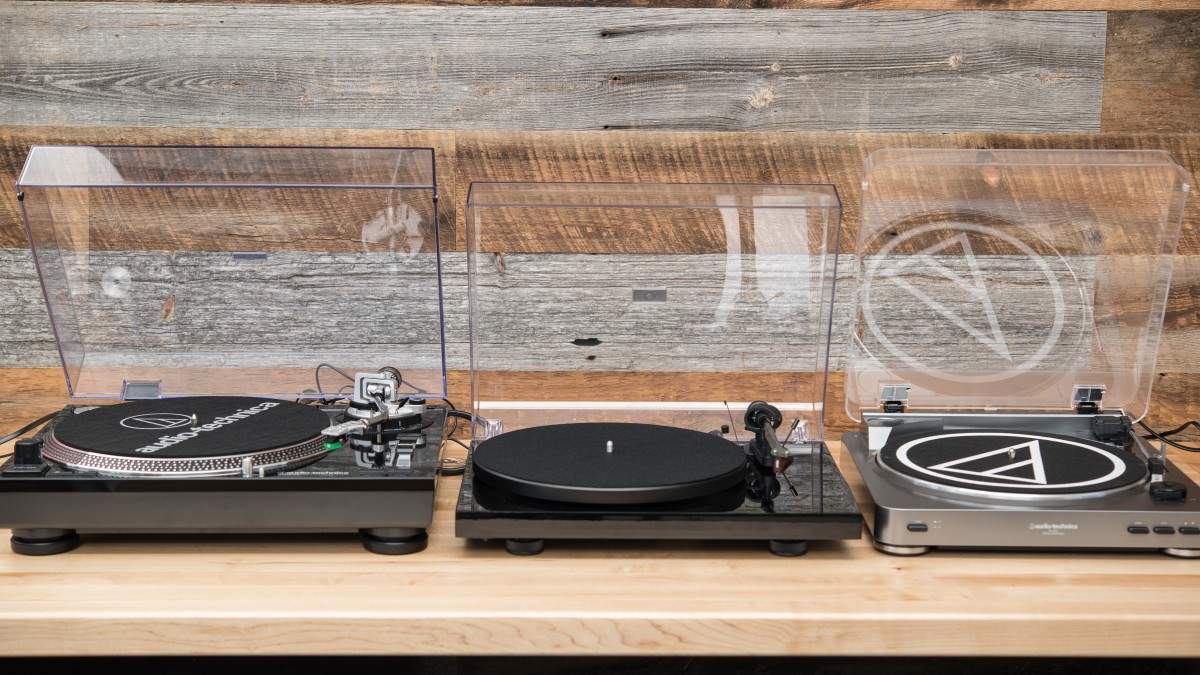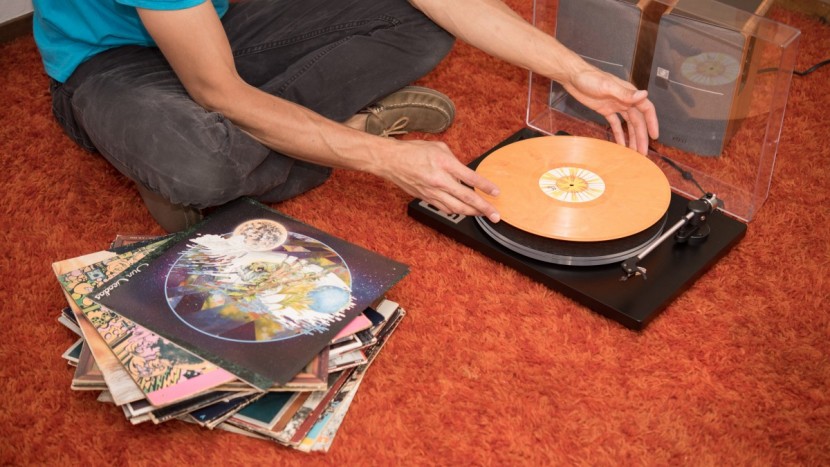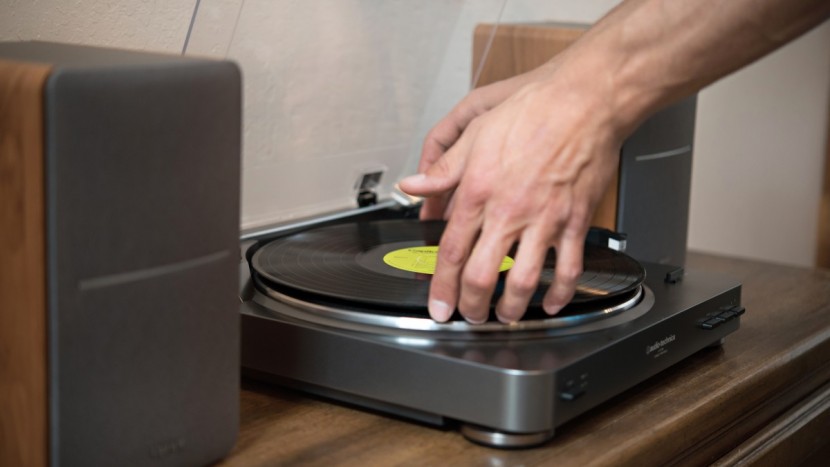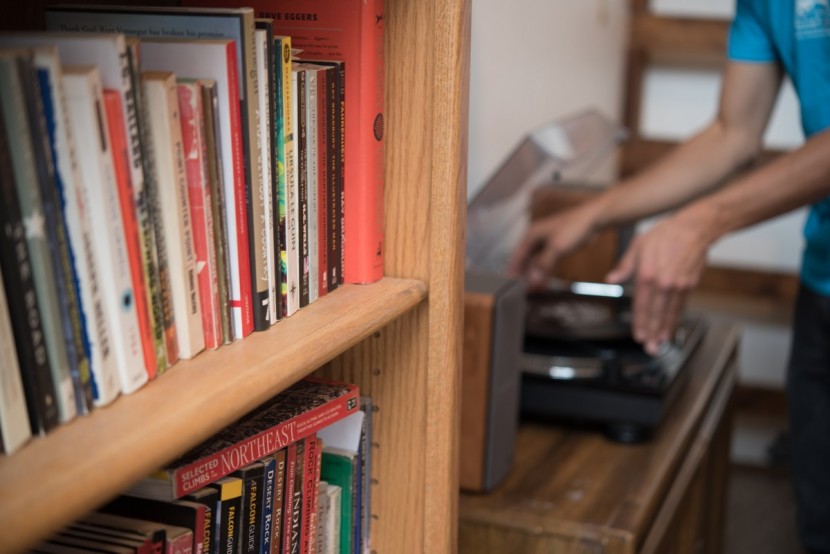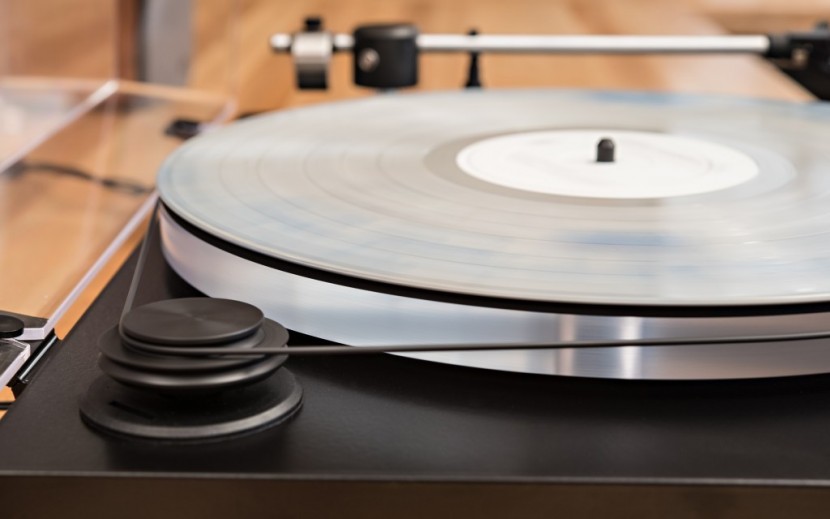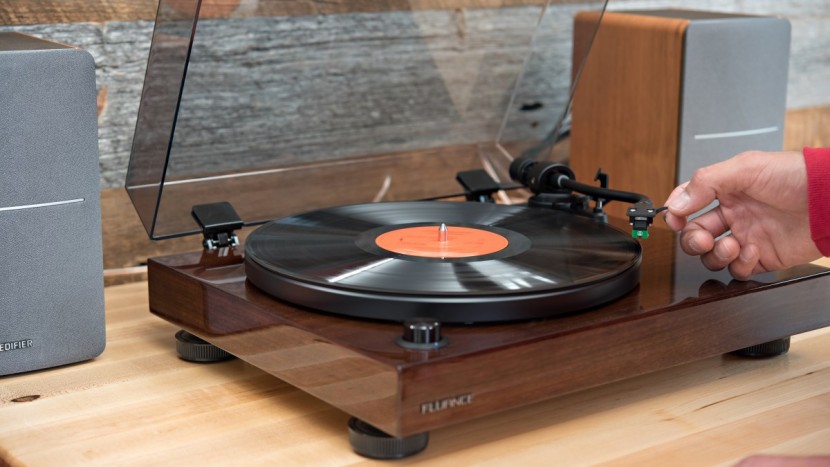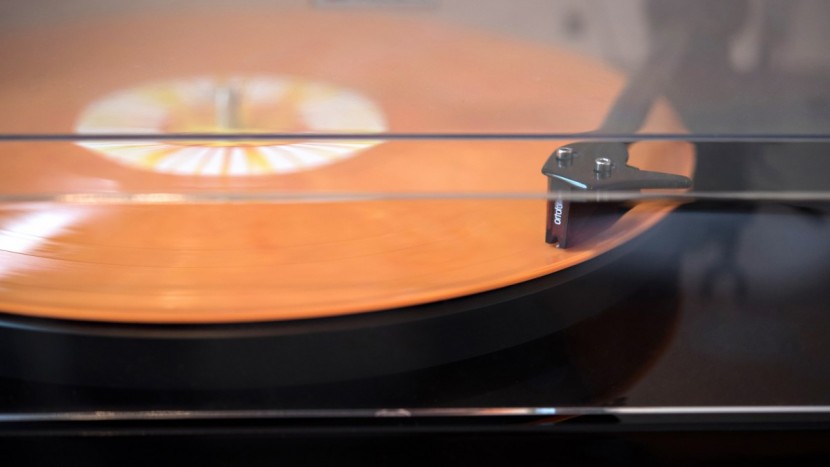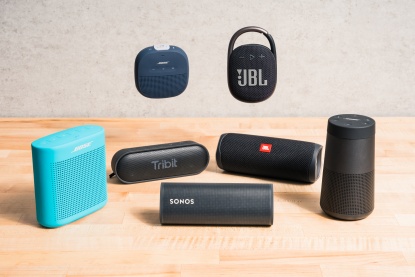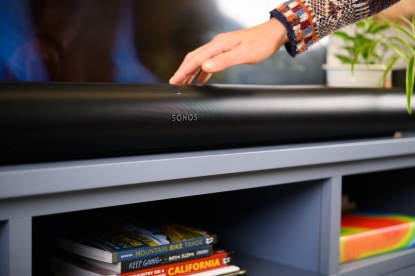In an age where every technological advance seems to focus on increasing efficiency and, in turn, allowing us to get more done in a given amount of time, it can be incredibly therapeutic to slow down and engage in an activity that requires your full attention and thus pulls your mind out of the hecticness of the digital age. Queue the resurgence of vinyl. Is listening to vinyl as convenient as turning on Pandora? Not at all. Does listening to vinyl engage more of your senses and encourage a more present and nuanced listening experience? Absolutely. Below we've compiled some general advice for determining whether vinyl is right for you and picking out the perfect record player.
Do You Want a Record Player?
Before we launch into one of our classic step-by-step buying guides, we first have to determine whether you really want a record player or not. This is a fairly complicated question with a couple different factors to consider:
Does Vinyl Sound Better?
This is a very contentious question, which we get into in more detail in the “Vinyl vs. Digital: Sound Quality” section below. But the short answer is: technically, no, but functionally, maybe. Looking at it from a technical aspect, most sound engineers would agree that a high-quality vinyl and a high-quality digital recording provide near identical quality, with both high-end equipment and a very highly trained ear required to discern any real difference.
If you're looking at sound quality from the view of a sound engineer, you're thinking about technical aspects like dynamic range, distortion of high and low frequencies, and signal-to-noise ratio. That, however, doesn't always line up with what the average listener experiences. For instance, many claim that vinyl has a warmer sound than its digital counterparts, and even though that warmth often comes from a small amount of distortion that is inherent in the vinyl format, many people like that sound. Bottom line: sound quality is incredibly subjective, so if you've listened to vinyl and thought it sounded better, then it sounds better.
Vinyl is an Experience
Today we have so many different ways of listening to music available to us, that listening to vinyl has become much more about the overall experience than the sound itself. Whereas listening to digital music mostly involves typing some keywords into your phone and the selecting a song, listening on vinyl places a physical object in your hand. As you pick up the record, you're treated to a huge piece of album art, revealing all of the artistic intricacies that would definitely be lost on the tiny preview displayed on your phone screen. Removing the actual record reveals a delicate and complicated piece of engineering that exudes a sense of careful and practiced craftsmanship. Setting the record down on the platter, starting the motor, and gently moving the tonearm so the needle delicately rests on the record can feel like a moving meditation that prepares you for the listening experience ahead. Once you're listening, the difficulty of switching between tracks encourages you to listen to an entire album, rather than jumping around between a bunch of different singles.
Are Records More Expensive?
Record prices can vary greatly based on the quality of the pressing and the source material that the pressing is produced from, but generally, the answer is yes. Most records will be significantly more expensive than buying a digital album on iTunes or Amazon ($7-$14 vs. $15-$30, though many new vinyls come with a digital copy of the music as well).
Bottom Line
If all of this sounds like a great experience to you, then you'll likely enjoy owning a record player. If it all sounds needlessly laborious considering you already have a bunch of favorite playlists that you can play at the push of a button, then a record player probably isn't for you. In fact, if all you're after is better sound quality and you don't care about the vinyl experience, you're probably better off spending your money on a quality set of speakers.
Choosing The Right Turntable
If you've made it through the above section feeling like a record player would be a great addition to your home, the following step-by-step guide will help you find the right model. In this guide, we use a lot of jargon that refers to the different parts of a record player. If you're not familiar with the parts of a record player, you can check out our 'Anatomy of a Record Player' section at the end of this article.
Step 1: How do you envision your vinyl journey? (i.e., how much do you want to spend?)
There are generally two different types of people who are buying their first record player. Those that just inherited a lot of old records from a relative and want to be able to listen to them, and those that are looking for a refined listening experience.
If you fall into the former category, then you probably just want something that sounds decent and is simple to use. In that case, there are multiple options around the $200 range that will work great for you.
If you fall into the latter camp, you'll likely want to spend a bit more. $300-$400 is a good range for a first record player. Models in this price range tend to offer significantly better sound, and often have interchangeable components, so you can upgrade the player piece by piece if vinyl turns into a passion.
Step 2: Manual or Automatic?
If you're looking for a foolproof vinyl experience, automatic models will move the tonearm and rest the needle onto the record at the push of a button. However, many people feel that gently lowering the tone arm yourself is all part of the vinyl experience. This is quite an easy skill to master, and even if you can't shake the fear of scratching your records most models at least have a cueing lever. These levers gently rest the needle down when pulled, reducing the risk of scratching and partially automating the stressful part of cueing, all you need to do is move the tonearm into place.
Step 3: Preamp, Internal or External?
As you may know, the signal produced by a record player is quite weak, so it must be amplified before it is fed into a speaker. That's the job of the preamp. Many record players have a preamp built-in. If you're looking for a simple and user-friendly machine, a built-in preamp is the way to go. If you see yourself wanting to eventually tinker with and possibly upgrade your vinyl rig, an external preamp offers more flexibility. Many models with an internal preamp let you bypass that preamp if you'd like to eventually get an upgraded external one, but true audiophiles will tell you that the bypass route will cause a bit of distortion. For most people, an integrated preamp will provide high enough sound quality and be much more convenient.
Step 4: Belt or Direct Drive?
This is an age-old question that likely will never have a definitive answer. What we can say is that in the sub $500 we found models using both styles that produced great sound, so you shouldn't get too hung up on it. Belt drives are better for isolating vibration, but this should not be an issue in the vast majority of listening environments.
Step 5: Make Sure You Have Everything You Need
Most record players use RCA cables as their main output, so you'll want to make sure you have a set of speakers that have an RCA input. You'll also want to make sure you have some RCA cables (most record players include these). Additionally, the speakers are just as important in terms of sound quality as the record player itself, so don't expect to plug your $400 record player into $20 speakers and be blown away by the sound. We used Edifier R1280T Powered Bookshelf Speakers in our testing and were quite impressed with them.
Step 6: Do You Need Digital Conversion?
The answer for most people here will be no. Many turntables include a USB port that allows you to essentially record tracks from a record onto a computer. This process is fairly time-consuming and is thus really only worth it if you have many old and/or rare records that you'd like to convert to digital. Plus, most new records include a digital download code as well, making digital conversion unnecessary.
Vinyl vs. Digital: Sound Quality
There is certainly a battle raging amongst audiophiles about the merits of analog (vinyl) recordings versus their digital counterparts. This is an incredibly complex topic that one could devote their entire life to and never come up with a definitive answer, but we've summarized some of the more salient points of that argument below.
Is Vinyl Truly Lossless?
Many vinyl proponents claim that vinyl offers all of the information the microphones picked up in the recording studio, whereas digital recordings require compression and, thus the loss of some of that information. This is true in some circumstances. For instance, if a studio recording is completed using analog tape reels, and then those reels are used to create a plate with which to press records, the vinyl will have more information on it than an mp3, and thus is going to provide a noticeable improvement over streaming services like Pandora and Spotify, which generally use very compressing mp3's in order to avoid lapses in streaming.
However, vinyl records don't magically make music. A record player uses a needle and tone arm to create an electrical signal from the vinyl, and then uses a preamp to amplify and equalize that signal. All of this is inevitably going to introduce some distortion, which is why most sound engineers claim that high-quality mp3s sound just as good even though they don't contain quite as much information as a vinyl record. Also, many newer vinyl pressings are not made from the master studio tapes, but are actually pressed from digital recordings, making them no better than an mp3.
Vinyl's Strong Points
Freedom From Compression
As we mentioned above, a high quality vinyl escapes the digital compression required to create the mp3 files used by the like of Pandora and Spotify. Even the relatively large file format used by iTunes requires a good amount of compression. However, whether that lack of compression comes through is largely dependent on the quality of the vinyl, the equipment you're listening to it on, and whether or not you have a finely tuned ear. Also, it looks as though 'HD audio' with mostly uncompressed digital files will eventually become the norm with new streaming services like Tidal offering lossless digital music streaming.
Volume Without Muddling
Often, when an mp3 is being created, there is a concern about how loud the file will sound on certain systems, thus the file is compressed even further in order to make sure it can be blared loud and proud at your next party. With vinyl, the volume is dependent on the size of the groove in the actual record, so you can achieve a high volume signal without compression or a loss of information. The caveat is that as an album gets longer, those grooves must get smaller in order to fit all of the music onto a record, so longer albums will tend to sound quieter than shorter ones.
Warmth
Perhaps the most well-loved characteristic of vinyl records is their warmth. While this warmth is often technically a slight distortion from the needle scratching across the record surface, it can add some nice depth to the right kind of music, and many people just prefer the sound.
Endless Tinkering and Tweaking, if You Want
Since a good vinyl truly loses no information from the original recording, some people can get engrossed in trying to take advantage of all that musical data sitting on the disc. This requires lots of trial and error with different record player, preamp, and speaker systems. For some, this can become a very enjoyable past time.
Vinyl's Weak points
Lack of High and Low Frequencies
This is largely a physical problem, as the grooves needed to produce high highs and low lows, especially if you're creating a stereo signal, can be so extreme that they'll knock the needle around. Therefore, vinyl recordings often have the highest and lowest notes smoothed out a bit, or they produce some distortion when playing notes on the far end of either spectrum. This is also why you'll never see bass-heavy electronic music pressed onto vinyl.
Outside Tracks Sound Better than Inside Tracks
As the needle of a record player gets closer to the center of a record, the changing circumference effectively changes the needle speed and can lead to distortion, so the last tracks on a record don't tend to sound as good as the first ones.
Surface Noise
That same distortion that lends vinyl its signature warm sound can also produce some distracting snaps, crackles, and pops. Again, many find these noises charming and vital to the vinyl listening experience, but they can be annoying to those seeking high audio quality. Luckily a good record player can reduce these noises to a minimum.
Anatomy of a Record Player
When shopping for a record player, it's helpful to know the names of all the different parts and how they function.
- Cartridge/Needle: Everyone is probably familiar with the needle (sometimes called a stylus) that floats across the record surface. The more important device, however, is the cartridge. This is the small box that the needle protrudes from, and is responsible for tracking the movements of the needle and turning that into an electrical signal. As the cartridge is essentially responsible for reading the information on the record, it is often the first component that audiophiles upgrade when they want to improve the sound of their vinyl rig.
- Tonearm: The tonearm holds the cartridge and needle at one end, and a series of weights on the other. The tonearm's job is to press the needle into the record at just the right pressure. That is where those weights come in, they can be moved back and forth in order to adjust the tracking force, or the pressure the needle exerts on the record. You're looking for something both light and stiff so that no external vibrations affect the cartridge, therefore, carbon fiber tends to be the material of choice.
- Platter: The platter is the bed that the record sits on. Here again, you're looking to reduce any external vibration, so you want a heavy and dense material that will transfer as little vibration as possible. These are typically made from metal or acrylic. Platters usually have a protective felt, rubber, or cork mat over them to dampen vibrations and prevent slippage.
- Drive: The drive is essentially a motor that spins the platter and, in turn, the record. The two major styles are belt drives and direct drives. Belt drives use a rubber belt wrapped around the platter that is connected to an external motor. For direct drives, the motor is directly connected to the platter. Belt drive proponents claim that the rubber belt is able to prevent vibrations from the motor from creeping into the platter, while fans of direct drive claim that having the motor directly connected to the platter produces a more consistent rate of speed. This is an ongoing debate, but in the sub $500 range, we found that both technologies can produce great sound.
- Preamp: The signal created by the cartridge is not itself strong enough to be fed into a speaker. The signal also needs to be equalized to achieve a proper balance of sound. Enter the preamp. It amplifies the signal and applies the proper equalization. Many record players have built-in preamps, but some models require you to buy an external one.
- Anti-skate Adjustment: Some record players have features to minimize tonearm skating. Tonearms tend to drift towards the center of turntables, and anti-skate features apply a small opposing force to prevent this. All of the record players with this feature have detailed instructions in properly balancing the tonearm.

